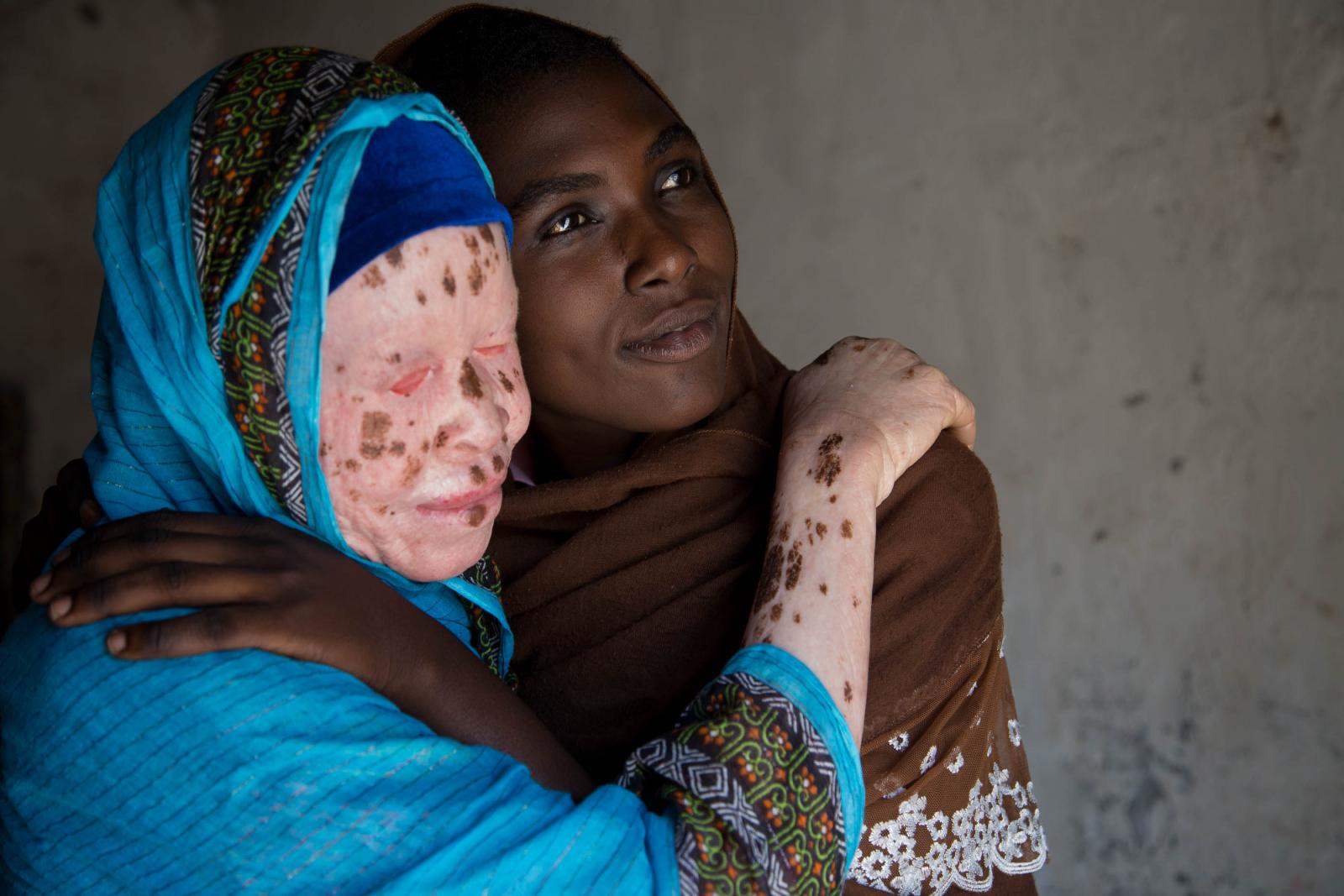It’s the peak of the afternoon in Nyamizeze, Tanzania, and Martha Mganga is in her element.
Better known as Sister Martha, the 54-year-old Rotary community advocate is one of her country’s most prolific campaigners for the rights of people with albinism, the often-misunderstood, inherited condition characterized by abnormally light skin, eyes, and hair, limited vision, and extreme sensitivity to the sun.
Mganga, an albino herself, has spent three decades helping those with the condition get an education, protect themselves from harmful ultraviolet rays, and fight pervasive myths and stigmas, including false beliefs, propagated by rogue witch doctors, that albino body parts can bring good luck or fortune.
Over the last decade, these superstitions have led to a wave of grisly albino killings, dismemberments, and even grave robberies. At least 76 Tanzanian albinos have been murdered; 72 others have survived attacks, often with severe mutilations.
On this day, Mganga is part of a team of facilitators taking part in a Rotary-supported community workshop, convened under a plastic tarp with a small group of elders from this village of about 10,000.
Already, multiple colleagues have addressed those in attendance: mostly male civic and religious leaders, dressed in fraying button-down shirts, who are joined by Nyamizeze’s two albino residents, Happiness Sebastian, 24, and her infant daughter, Keflin.
The discussion, meant to educate locals on albinism’s causes, debunk its many stigmas, and promote the well-being of the albino community, has already touched on the condition’s genetics, the recent attacks, and the many dehumanizing myths.
Albinism is a curse brought on by evil spirits, one villager says he was taught as a child. It’s the result of an African woman sleeping with a white man, says another. “Albinos do not die,” says a third. “They simply disappear.”
Mganga, speaking toward the end of the session, saves her words for what she believes is the day’s most critical message.
For all the horrors of the killings, she tells the group, albinos face an even greater danger from the sun. Because albinos have low levels of melanin, the pigment that gives skin, hair, and eyes their color, they lack adequate protection from the sun’s ultraviolet rays, a reality that is often deadly in an equatorial country like Tanzania.

